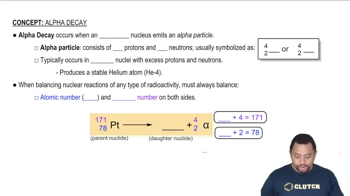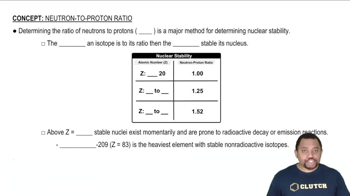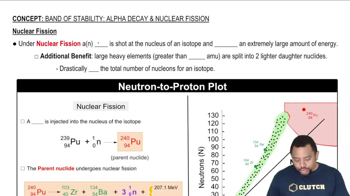Here are the essential concepts you must grasp in order to answer the question correctly.
Alpha Emission
Alpha emission is a type of radioactive decay where an atomic nucleus emits an alpha particle, which consists of two protons and two neutrons. This process is common in heavy elements because the emission of an alpha particle helps the nucleus achieve a more stable configuration, often associated with 'magic numbers' of nucleons that confer additional stability.
Recommended video:
Proton Emission
Proton emission is a less common form of radioactive decay where a proton is ejected from the nucleus. This process is rare because it typically requires a nucleus to be in a highly unstable state, as removing a proton can significantly disrupt the balance of forces within the nucleus, making it less favorable compared to alpha emission.
Recommended video:
Nuclear Stability
Nuclear stability is determined by the ratio of protons to neutrons and the overall binding energy of the nucleus. Nuclei with 'magic numbers' of protons and neutrons are particularly stable, which explains why alpha particles, which are composed of these stable configurations, are more commonly emitted than protons, which do not benefit from the same level of stability.
Recommended video:
Band of Stability: Nuclear Fission





